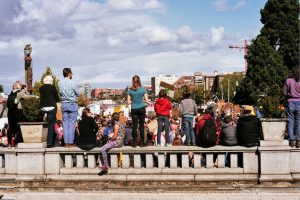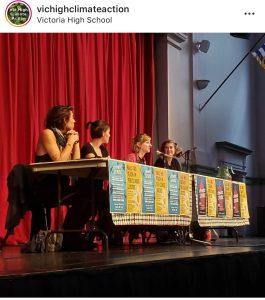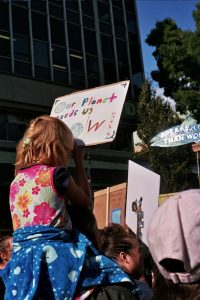
These past few weeks, starting the program, I’ve been doing a lot of thinking about the biases and perspectives I’ll be bringing into my classroom and pedagogy. The UVic Teacher Ed. Competency Guide asks us to consider questions around this idea, wishing us to introspect around how our intersections will shape the sort of educators we will be (p. 7).
But I think beyond that, what I am more interested in is the question of how I can engage and support my future students in being empathic, community- and justice- minded folks (and how I can sit with and continue to support students wholly uninterested in such issues).
One of the reasons I’ve been ruminating on this subject is our Teaching Social Studies class, where we have been talking about how to best facilitate a classroom where its occupants are faced with a world struggling with the effects of catastrophic climate change. It has been such a treat spending my Wednesdays at Vic High, especially since my first day there began with a Politics 12 class that was organizing a Climate Emergency Assembly. I got to observe youth self-organize, make mistakes, question best practices, and practice holding each other accountable. On my second day, I was able to attend the assembly itself, and experience their activism first hand.

Going to the climate strike on September 27th culminated in a lot of emotions that I found myself processing while marching. As a future educator, I felt camaraderie with all the other teachers there, especially the ones that had brought groups of their students down to the strike. As an environmental activist that used to do a lot of direct action work, I felt like my intention had shifted in being in a space such as that one, from loud chaotic outrage to a community-oriented responsibility in being an adult and taking care of others. It was really curious to feel and to sit with.
Looking around and seeing so many youth and children at the strike, obviously missing school and other day-time commitments to be there, I felt a deep mixture of guilt, pride and also second hand grief for their futures. It reminded me that my intention in becoming an educator is wholly shaped by my longing to support and empower young people, and I also felt excitement at all these future (complicated) possibilities.

I think, in conclusion, I’m deciding that these questions will be best answered by looking to my students to see what sort of bias disclosure and activism support they want from me. Obviously the answer isn’t as clear cut as that, but I’m excited for a career which will be full of me making mistakes and learning best practices as I go.
Works Cited:
Bell, D., Elsner, S., Hopper, T., Robertson, K., & Sanford, K. (2019). Teacher Education Program Competencies: A Guide [PDF File].
Vic High Climate Action Instagram [@vichighclimateaction]. (2019, Sept 29). Retrieved from https://www.instagram.com/vichighclimateaction